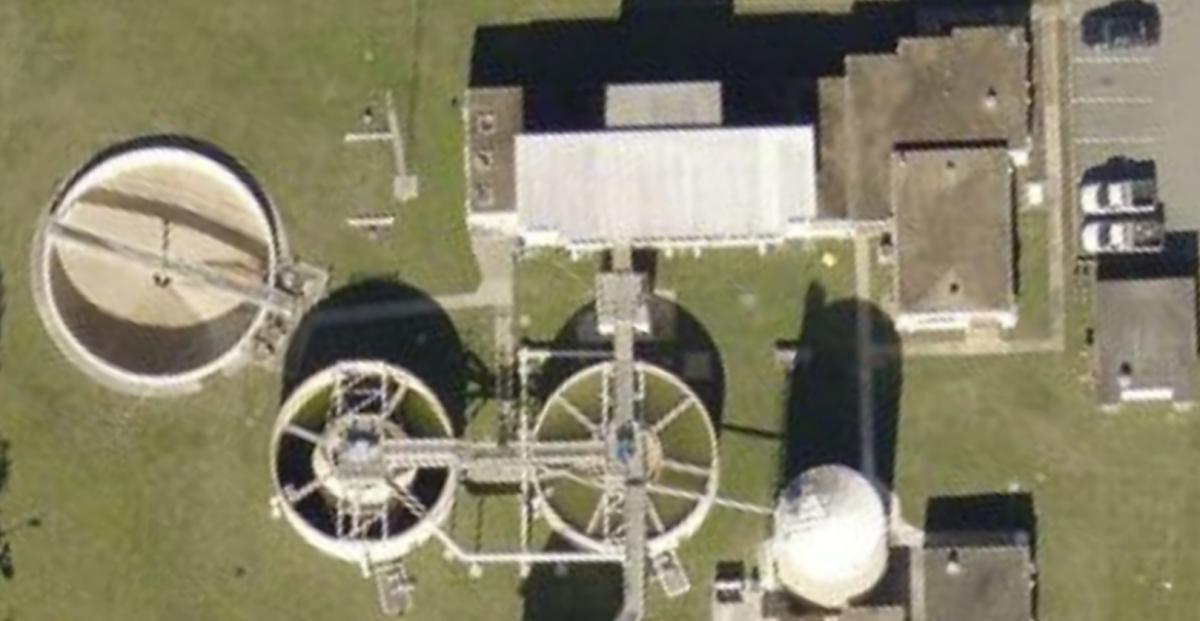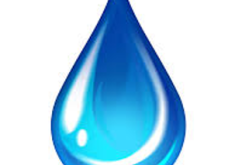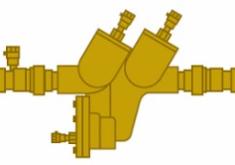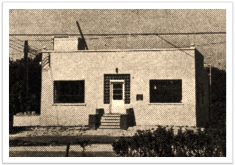
The goal of the City of Holly Hill’s Water Treatment Plant and Distribution System is to provide a safe and reliable source of potable water to its citizens and businesses.
The City of Holly Hill Water Treatment Plant is staffed by dedicated and highly trained operators. These operators are all certified and licensed by the State of Florida. The operators are continually trained in the current practices of the water treatment field, and must maintain their license through continuous education which leads to a renewal of their license every 2 years.
The Water Treatment Plant can treat up to 2.3 million gallons of water per day. This water is drawn from the Floridan Aquifer into underground wells – some of which are located 250 feet below the surface of the ground. The water from the wells are then sent through underground pipes to the Water Treatment Plant for purification. At the plant, the water is run through several treatment processes including aeration, coagulation, lime softening, filtration, corrosion control, fluoridation, and disinfection by chloramination to kill any harmful bacteria.
The Water Plant operates under very strict guidelines and rules set by the Florida Department of Environmental Protection and the Volusia County Health Department. The water is monitored and analyzed throughout the treatment process. The water is then pumped through the approximately 73 miles of pipe under the City to deliver clean, safe and refreshing water to homes and businesses.
Periodically, the City will collect water samples and flush hydrants to ensure that the water coming into your home or business meet certain standards. These standards are set to ensure the water is clean and safe, not only for drinking but also for cooking, bathing, fire protection and industrial use.
Frequently Asked Questions
Related Questions
How Do I Find a Leak?
Sometimes you may have a leak and not know it. The best indication is high usage on your bill compared to past usage. There are often 2 reasons for mysterious water leaks: a leaking toilet or a small slow drip at a faucet. Outdoor leaks are rare. The first step is to determine whether you actually have a leak, or are just using more water than you expected. Most customers are surprised how much water can be used for routine activities.
- SHOWERS 5-10 gallons per minute
- TOILETS 7 gallons per minute
- WASHING MACHINE 40 gallons per large load
- AUTOMATIC DISHWATER 12 gallons per run
- BRUSHING TEETH (w/water running) 5 gallons per minute
- RINSING DISHES 5 gallons per minute
FACTS ON LEAKS
- Ten percent of homes have leaks that waste 90 gallons or more per day.
- Common types of leaks found in the home include leaking toilet flappers, dripping faucets, and other leaking valves.
- Fixing easily corrected household water leaks can save homeowners more than 10 percent of their water bills.
LEAK DETECTION
- Check your water meter before and after a two-hour-period when no water is being used. If the meter does not read exactly the same, you probably have a leak .
- One way to find out if you have a toilet leak is to place a drop of food coloring in the toilet tank. If the color shows up in the bowl within 15 minutes without flushing, you have a leak. Make sure to flush immediately after this experiment to avoid staining the tank.
TOILET
- lf your toilet is running constantly, you could be wasting 6,000 gallons of water or more every day.
- If your toilet is leaking, the cause is most often an old, faulty toilet flapper. Over time, this inexpensive rubber part decays, or minerals build up on ii. It's usually best to replace the whole rubber flapper - a relatively easy, inexpensive do-it-yourself project that pays for itself in no time.
How Do I Read My Water Meter?
To help you understand how much water your home or business uses, you will want to know how to read your meter. This will also help you to identify leaks and discover ways to conserve water. A water meter measures the amount of water entering your plumbing system. Most meters are located in boxes in the ground near the curb.
- Open the box carefully and inside you'll find the water meter. The meter dial can be found under the small, hinged cover. If the glass is dirty, wipe it clean to make it easier to read. The meters used in Holly Hill measure water in gallons.
- Your water meter is much like your car's odometer, showing the cumulative total of water that has run through your meter. The sweep hand, which moves like a clock hand, measures each gallon of water, up to 10 gallons.
- Notice the first number on the right of the total is a stationary zero; there's no need for it to move because the sweep hand does its work. Except for the stationary zero, the rest of the number is read like an odometer.
- The movable dials to the left of the stationary zero read in 10s, 100s, 1,000s of gallons, and so on. A red triangular dial near the center of the meter face is used for leak detection and will spin even if there is an extremely low flow through the meter.
What are some water saving tips?
The following suggestions are provided to help you conserve water, thereby saving this resource, AND YOUR MONEY! See how many you can use to improve water conservation within your household.
Saving Water Indoors
- Reuse household water instead of just pouring it down the drain. Other uses include watering a plant or garden, or cleaning.
- Check that your home is leak-free. Many homes have hidden water leaks. Read your water meter before and after a two-hour period when no water is being used. If the meter does not read exactly the same, there is a leak somewhere.
- Repair dripping faucets. This may be as simple as replacing a washer. If your faucet is dripping at the rate of one drop per second, you can expect to waste 2,700 gallons per year. This adds to "your" water bill.
- Retrofit all wasteful household faucets by installing aerators with flow restrictors.
- Consider installing an instant water heater on your kitchen sink so you don't have to let the water run while it heats up. This will reduce heating costs for your household.
- Insulate your water pipes. You'll get hot water faster plus avoid wasting water while it heats up.
- Don't install a water-to-air heat pump or air-conditioning system. Newer air-to-air models are just as efficient and do not waste water.
- Install water softening systems only when necessary. Save water and salt by running the minimum amount of regenerations necessary to maintain water softness. Turn softeners off while on vacation.
- When adjusting water temperatures, instead of turning water flow up, try turning it down. If the water is too hot or cold, turn the offender down rather than increasing water flow to balance the temperatures.
- Store drinking water in the refrigerator rather than letting the tap run every time you want a cool glass of water.
- Do not use running water to thaw meat or other frozen foods. Defrost food overnight in the refrigerator (much safer too!) or by using the defrost setting on your microwave.
- Kitchen sink disposals require lots of water to operate properly. Start a compost pile as an alternate method of disposing food waste instead of using a garbage disposal. Garbage disposals also can add 50% to the volume of solids in a septic tank which can lead to malfunctions and maintenance problems.
- Take shorter showers. Replace you showerhead with an ultra-low-flow version. Some units are available that allow you to cut off the flow without adjusting the water temperature knobs.
- Use the minimum amount of water needed for a bath by closing the drain first and filling the tub only 1/3 full. The initial burst of cold water can be warmed by adding hot water later.
- Don't let water run while shaving or washing your face. Brush your teeth first while waiting for water to get hot, then wash or shave after filling the basin.
- Only run your automatic dishwasher and clothes washer when they are fully loaded, or properly set the water level for the size of load you are using.
- When washing dishes by hand, fill one sink or basin with soapy water. Quickly rinse under a slow-moving stream from the faucet.
- Check for leaks in the toilet tank by adding food coloring to the tank. If the toilet is leaking, color will appear within 30 minutes. Check the toilet for worn out, corroded or bent parts. Most replacement parts are inexpensive, readily available and easily installed. (NOTE: Flush as soon as test is done, since food coloring may stain tank.)
- Avoid flushing the toilet unnecessarily. Dispose of tissues, insects and other such waste in the trash rather than the toilet.
- If the toilet flush handle frequently sticks in the flush position, letting water run constantly, replace or adjust it.
Saving Water Outdoors
- Don't overwater your lawn. If you have puddles in your yard it might be your sprinklers, not rain.
- A hearty rain eliminates the need for watering. Install a rain sensor device or switch which will override the irrigation cycle of the sprinkler system when adequate rainfall has occurred. To retrofit your existing system, contact an irrigation professional for more information.
- Plant smart. Xeriscape landscaping is a great way to design, install and maintain both your plantings and irrigation system that will save you time, money and water.
- Water lawns during the early morning hours when temperatures and wind speed are the lowest. This reduces losses from evaporation.
- Don't water your street, driveway or sidewalk. Position your sprinklers so that your water lands on the lawn and shrubs ... not the paved areas.
- Install sprinklers that are the most water-efficient for each use. Micro and drip irrigation and soaker hoses are examples of water-efficient methods of irrigation.
- Regularly check your sprinkler system and timing devices to be sure they are operating properly.
- Raise the lawn mower blade to at least three inches. A lawn cut higher encourages grass roots to grow deeper, shades the root system and holds soil moisture better than a closely-clipped lawn.
- Avoid over-fertilizing your lawn. The application of fertilizers increases the need for water. Apply fertilizers which contain slow-release, water-insoluble forms of nitrogen.
- Mulch to retain moisture in the soil. Mulching also helps to control weeds that compete with pants for water.
- Plant native and/or drought-tolerant grasses, ground covers, shrubs and trees. Once established, they do not need to be watered as frequently and they usually will survive a dry period without any watering. Group plants together based on similar water needs.
- Do not hose down your driveway or sidewalk. Use a broom to clean leaves and other debris from these areas. Using a hose to clean a driveway can waste hundreds of gallons of water.
- Outfit your hose with a shut-off nozzle which can be adjusted down to fine spray so that water flows only as needed. When finished, "Turn it Off" at the faucet instead of at the nozzle to avoid leaks.
- Use hose washers between spigots and water hoses to eliminate leaks. Check all hoses, connectors and spigots regularly.
- Do not leave sprinklers or hoses unattended. Your garden hoses can put out 600 gallons or more in only a few hours, so don't leave the sprinkler running all day. Use a kitchen timer to remind yourself to turn it off.
- Consider using a commercial car wash that recycles water. If you wash your own car, park on the grass. This way the water will perform two functions.
- Avoid installing ornamental water features (such as fountains) unless the water is recycled. Locate where there are mineral losses due to evaporation and wind drift.
- If you have a swimming pool, consider a new water-saving pool filter. A single back-flushing with a traditional filter uses from l80 to 250 gallons or more of water.
General Water Saving Tips
- Teach your children the need for water conservation. Avoid the purchase of recreational water toys which require a constant stream of water.
- Be aware of and follow all water conservation, irrigation, and water shortage rules and restrictions which may be in effect.
- Encourage your employer to promote water conservation at the workplace. Suggest that water conservation be put in the employee orientation manual and training program.
- Patronize businesses which practice and promote water conservation.
- Report significant water losses (broken pipes, open hydrants, errant sprinklers, abandoned free-flowing wells, etc.) to the property owner, or to us. Where emergency repairs are needed due to a broken water main, call the police, they will get hold of the necessary personnel.
- Encourage your school to promote a water conservation ethic among children and adults, and participate in water conservation education programs.
- Support projects that will lead to an increased use of reclaimed waste water for irrigation and other uses.
- Support efforts and programs to create a concern for water conservation among tourists and visitors to our area. Make sure your visitors understand the need for, and benefits of, water conservation.
- Encourage your friends and neighbors to be part of a water conscious community. Promote water conservation in homeowner association newsletters, on bulletin boards and by example.
- Conserve water because it is the right thing to do. Don't waste water just because someone else is footing the bill such as when you are staying at a hotel, or it's included in your rent.
- Try to do one thing each day that will result in a savings of water. Don't worry if the savings is minimal. Every drop counts. And every person can make a difference. So tell your friends, neighbors and co-workers to "Turn it Off" and "Keep it Off".
What are the Irrigation Watering Restrictions?
Watering restrictions are the same for all county residents, including Holly Hill.
- Watering is not allowed between 10 a.m. and 4 p.m.
- During Eastern Standard Time:
- Residential irrigation is limited to 4 p.m. to 10 a.m. Saturdays for odd-numbered addresses and Sundays for even-numbered addresses.
- Businesses may irrigate from 4 p.m. to 10 a.m. Tuesdays.
- During Daylight Saving Time: (Daylight Saving Time begins the second Sunday in March and ends the first Sunday in November.)
- Residential irrigation is allowed at odd-numbered addresses from 4 p.m. to 10 a.m. Wednesdays and Saturdays and even-number addresses Thursdays and Sundays.
- Business may irrigate from 4 p.m. to 10 a.m. Tuesdays and Fridays.
- Irrigation is limited to no more than one hour and three-quarters inch of water per zone per irrigation day. A typical yard has four irrigation zones.
- Restrictions apply to all water sources, including private wells, surface water, and water from public and private utilities, except for reclaimed water (see your reclaimed water provider for any restrictions.)
- New plantings may be watered any time for 30 days, then every other day for another 30 days. Keep the store receipt for proof of purchase.
- Hand watering is allowed any time with an automatic shutoff on the hose.
- Watering of chemicals is allowed any time within 24 hours of application and may not exceed a quarter-inch of water.
- Automatic landscape irrigation systems, regardless of the date of installation, must be equipped with functional rain-sensing devices or soil-moisture sensors.
- Agricultural uses are exempt from the provisions of the Water Conservation Ordinance, as long as they follow the agricultural water conservation requirements of the St. Johns River Water Management District.
Where Does My Water Line Become Mine?
The City of Holly Hill provides service and maintenance up to, and including, the meter. Once water exits the meter, it enters the customer's privately owned system and area of responsibility. If City staff observes potential leaks or other problems with your plumbing, they will let you know. However, you are responsible for assessing and making any necessary repairs or calling a qualified plumber to do so on your behalf.
Who Do I Call If I Have A Question About My Bill?
All billing is handled through Utility Billing Office of the Finance Department. They can be reached at (386) 248-9432, or you can visit them on the main floor of City Hall
Will a malfunctioning meter cause me to receive a large bill?
Typically water meters less than 10 years in age test very accurately (plus or minus 3 percent), and meters, when they do begin to lose accuracy, almost always underreport flow passing through them, benefiting the customer when they start to fail.
Can I use a fire hydrant to fill my pool?
No. The use of fire hydrants is restricted to emergency use and those contractors that have obtained hydrant permits only. Special water meters are issued to these commercial users. Contact 386-248-9432 to obtain a hydrant permit.
Can Water Cause Hair To Turn Green?
The most common cause of "green hair" is a chemical reaction that occurs when copper leaches into water from copper plumbing within your home, and these copper compounds react with blond hair. "Green hair" may also occur when blond hair has contact with the high chlorine dosages or copper sulfate used in pools and spas for algae control. Hair tints, dyes, and permanents can significantly alter the chemical structure of hair and cause it to react adversely with other chemicals such as chlorine. Using special shampoos designed for swimmers or for color-treated or permed hair may be helpful
Sometimes I see City workers opening fire hydrants and letting the water gush out. Aren’t they wasting water?
Periodically, the water department will flush water mains in your neighborhood to help maintain water quality and to “exercise” fire hydrant valves. Rust and grit can build up inside city water lines just like it can in the plumbing in your home. Flushing the lines helps to keep the rust from building up and clogging pipes and hydrants.
What are the Risks to Water Supply Due to Storm/Flood?
Hurricanes can contaminate the public water supply, especially if a tidal surge or flooding comes with it. Drinking contaminated water may cause illness. People cannot assume that the water in the hurricane-affected area is safe to drink.
If we are hit by a hurricane or tropical storm our water treatment plant may not be operating. Even if it is, storm damage and flooding can taint water lines. Listen for public announcements about the safety of the public water supply. I
Water for Drinking and Cooking
Safe drinking water includes bottled, boiled or treated water. Here are some general rules concerning water for drinking and cooking. Remember:
- Do not use contaminated water to wash dishes, brush your teeth, wash and prepare food or make ice.
- If you use bottled water, know where it came from. Otherwise, water should be boiled or treated before use. Drink only bottled, boiled or treated water until your supply is tested and safe.
- Boiling water kills harmful bacteria and parasites. Bringing water to a rolling boil for 1 minute will kill infectious germs.
- Water may be treated with chlorine by mixing eight drops (1/8 teaspoon; about the size of a dime) of unscented, ordinary household chlorine bleach (4-6 percent active ingredients) per gallon of water. Mix the solution thoroughly, and let stand for approximately 30 minutes. Use a container that has a cap or cover for disinfecting and storing water to be used for drinking. This will prevent contamination. However, this treatment will not kill parasites that may have entered a flooded well. Iodine or other disinfection tablets available at sporting goods, drug or discount stores may also be used.
- Containers for water should be rinsed with a bleach solution before reusing them (one tablespoon bleach per gallon of water). Use water storage tanks and other types of containers with caution. For example, fire truck storage tanks as well as previously used cans or bottles may be contaminated with bacteria or chemicals. Do not rely on untested water treatment devices for decontaminating water.
For more information, please contact your county health department or visit www.floridahealth.gov or www.floridadisaster.org.



